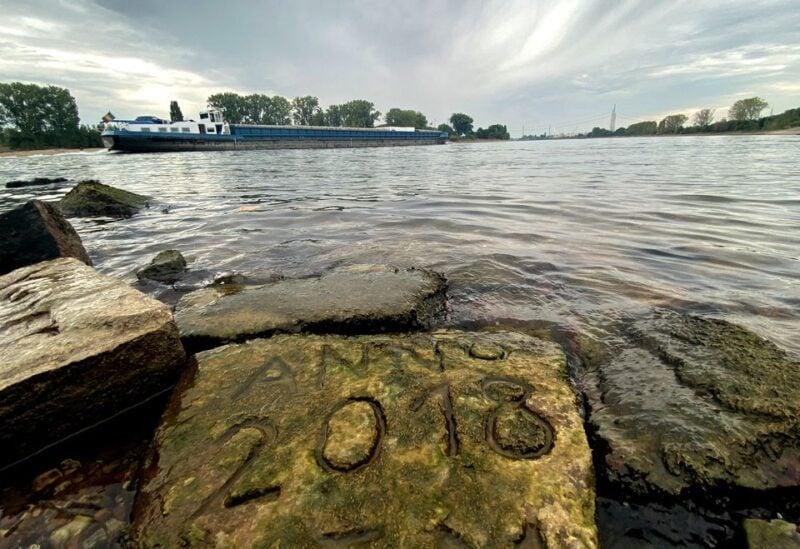
One of the 'hunger stones' is revealed by the low level of water in Worms, Germany, August 17, 2022
Across Europe, weeks of searing dryness have caused water levels in rivers and lakes to drop to levels few can recall, exposing long-buried riches – and some unexpected threats.
In Spain, which is suffering from its worst drought in decades, researchers have been overjoyed by the discovery of a prehistoric stone circle known as the “Spanish Stonehenge,” which is typically submerged by dam waters.
The stone circle, known officially as the Dolmen of Guadalperal, is now totally exposed in one corner of the Valdecanas reservoir in the central province of Caceres, where authorities claim the water level has plummeted to 28% of capacity.
It was discovered by German archaeologist Hugo Obermaier in 1926, but the area was flooded in 1963 in a rural development project under Francisco Franco’s dictatorship. Since then it has only become fully visible four times.
Memories of past droughts have also been rekindled in Germany by the reappearance of so-called “hunger stones” along the River Rhine. Many such stones have become visible along the banks of Germany’s largest river in recent weeks.
Another of Europe’s mighty rivers, the Danube, has fallen to one of its lowest levels in almost a century as a result of the drought, exposing the hulks of more than 20 German warships sunk during World War Two near Serbia’s river port town of Prahovo.
Italy has declared a state of emergency in the Po Valley, and a previously submerged 450-kg (1,000-pound) World War II bomb was discovered in the low-flowing waters of the country’s longest river in late July.
Around 3,000 residents were evacuated from the northern town of Borgo Virgilio, close to the city of Mantua, while military experts defused and detonated the US-made explosive earlier this month.